Brazilian Jiu-Jitsu (BJJ) is a martial discipline that is developing around the world and has become very popular in Europe. BJJ is particularly appreciated for its diversity and its ability to adapt to various situations.
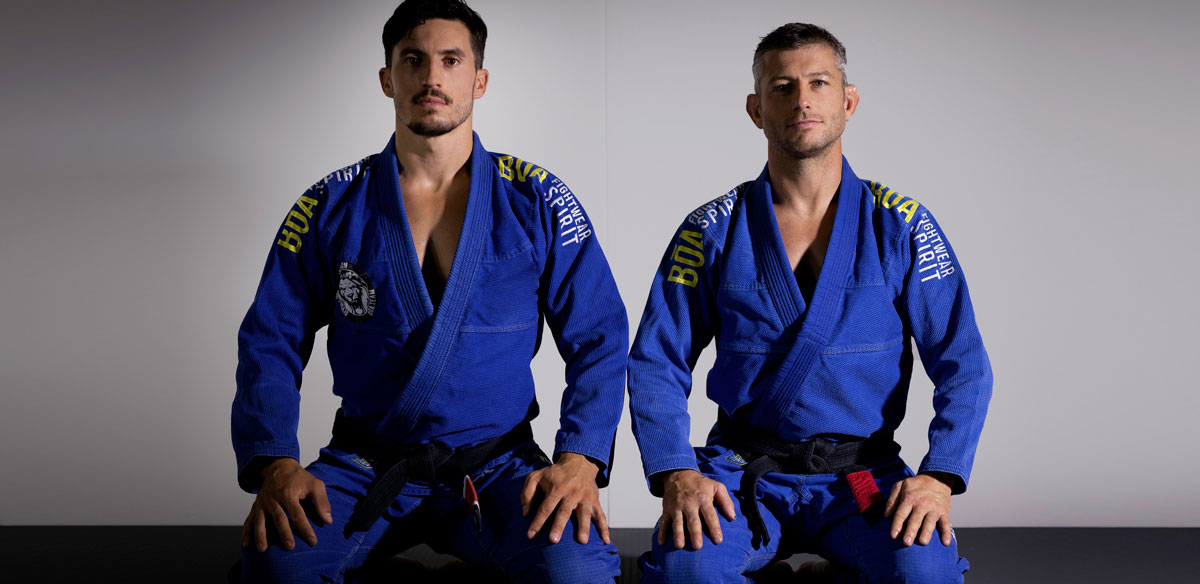
Born in Brazil from techniques of judo and Japanese jiu-jitsu, it quickly gained popularity and spread across the world, affecting people of all nationalities and cultural backgrounds.
BJJ practitioners share a mutual respect and passion for the art, creating a united global community. International competitions are a perfect example of this cultural fusion, bringing together athletes from different countries and creating a space where various traditions and styles can meet and intersect. Brazilian Jiu-Jitsu transcends borders and cultural differences, uniting people around a common passion for the martial art.
BJJ
How is BJJ practiced?
Brazilian Jiu-Jitsu is a martial discipline that offers many opportunities for learning, improvement and competition. It is essential that practitioners ensure that they have the appropriate equipment as well as the necessary technical skills. It is important that they also understand and respect the rules and codes related to the practice of BJJ so that they can fully and safely enjoy this magnificent martial discipline.
It is important to understand that the practice of BJJ in training and in competition is different. Practice in training focuses on technique and personal development, while competition allows practitioners to show what they have learned over the years. It is therefore essential that competitors are prepared to practice their skills in a high-level context to obtain positive results.
The practice of BJJ is framed by a set of rules, which all competitors should know and respect. These rules are notably linked to the grades obtained by the practitioner in order to be able to participate in competitions; grades are the result of a specific review process and years of practice.

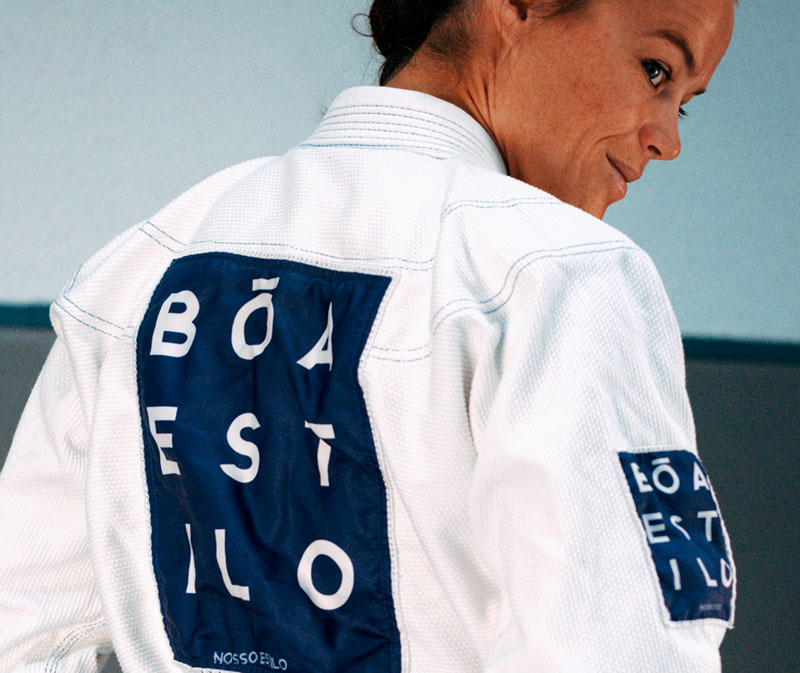
Brazilian Jiu-Jitsu
What are the benefits of practicing Brazilian Jiu-Jitsu?
Here are some of the most important :
Personal defense : Brazilian Jiu-Jitsu is an effective martial art for defending against an attack. It allows you to learn how to control a bigger and stronger opponent, and to subdue him without having to use brute force.
Physical fitness : Brazilian Jiu-Jitsu is a very complete sport that allows you to work all the muscles of the body. It is also very cardio, which helps burn calories and lose weight.
Self-confidence : Brazilian Jiu-Jitsu is a sport that requires discipline, concentration and perseverance. By practicing Brazilian Jiu-Jitsu, you will develop your self-confidence and your self-esteem.
Fellowship : Brazilian Jiu-Jitsu is a sport that is practiced in groups. By training with other people, you will develop bonds of friendship and camaraderie.
Fun : Brazilian Jiu-Jitsu is a very fun sport to practice. You will be able to test your limits, surpass yourself and have fun while learning how to defend yourself.
If you are looking for a martial art that will allow you to defend yourself, get fit, build your confidence and have fun, then Brazilian Jiu-Jitsu is for you.
Learn about Brazilian Jiu-Jitsu

What are the rules of Brazilian Jiu-Jitsu?
There are strict rules to follow in Brazilian Jiu-Jitsu. The basis is respect (primordial in this discipline), not only towards the instructors and the other students, but also towards the dojo (training room) as well as the equipment.
Then, the kimono must be clean and well fitted, a sign of respect for yourself and your partners. Belts, which indicate rank and skill level, must be worn and tied properly. In terms of behaviour, the use of dangerous or unauthorized techniques is prohibited, and any form of aggressiveness or unsportsmanlike behavior is severely sanctioned.
Finally, it is essential to respect the decisions of the referees during competitions. It is important to note that these rules may vary slightly depending on the school or organization, but they all share a common goal: to ensure safety and promote mutual respect.
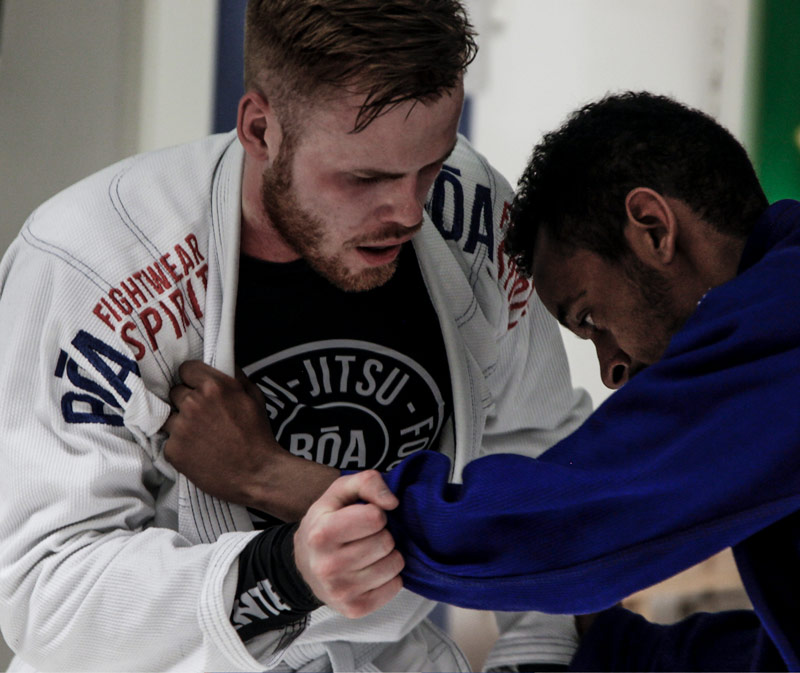
What are the main techniques of Brazilian Jiu-Jitsu?
The technical basis of Brazilian Jiu-Jitsu is based on the mastery of several essential elements. The first and arguably the most important is defense, which includes the art of blocking, dodging and controlling an opponent's attacks. Next comes ground control. BJJ is particularly recognized for its emphasis on ground combat, where the ability to control the opponent using different stances and transitions is crucial. Submission techniques, which force the opponent to give up by strangulation, joint tightening or muscle compression, are also a fundamental aspect of BJJ.
Here is a list of the main techniques of Brazilian Jiu-Jitsu :
Basic techniques : The basic techniques of Brazilian Jiu-Jitsu include guarding, guard passing, posture control, submission and swimming techniques.
Advanced Techniques : Advanced Brazilian Jiu-Jitsu techniques include specific submission techniques, advanced guard passing techniques, and advanced posture control techniques.
Specific techniques : There are many techniques specific to Brazilian Jiu-Jitsu, such as choke submission techniques, joint key submission techniques, and muscle compression submission techniques.
What is the Brazilian Jiu-Jitsu Federation?
There are several federations dedicated to Brazilian Jiu-Jitsu around the world. In Europe, one of the most important is the International Brazilian Jiu-Jitsu Federation IBJJF. This federation regularly organizes Brazilian Jiu-Jitsu competitions and events across continents, including the European Brazilian Jiu-Jitsu Championships. They play a crucial role in the promotion and development of the sport, setting standards, providing coach education, competitions and representing the interests of Brazilian Jiu-Jitsu athletes at all levels.
European competitions under this BJJ federation are very popular, just like in the rest of the world. Students and competitors can participate in tournaments which are organized every year in various European countries. These tournaments allow competitors to measure themselves against foreign opponents and to be confronted with different styles and levels of Brazilian Jiu-Jitsu.
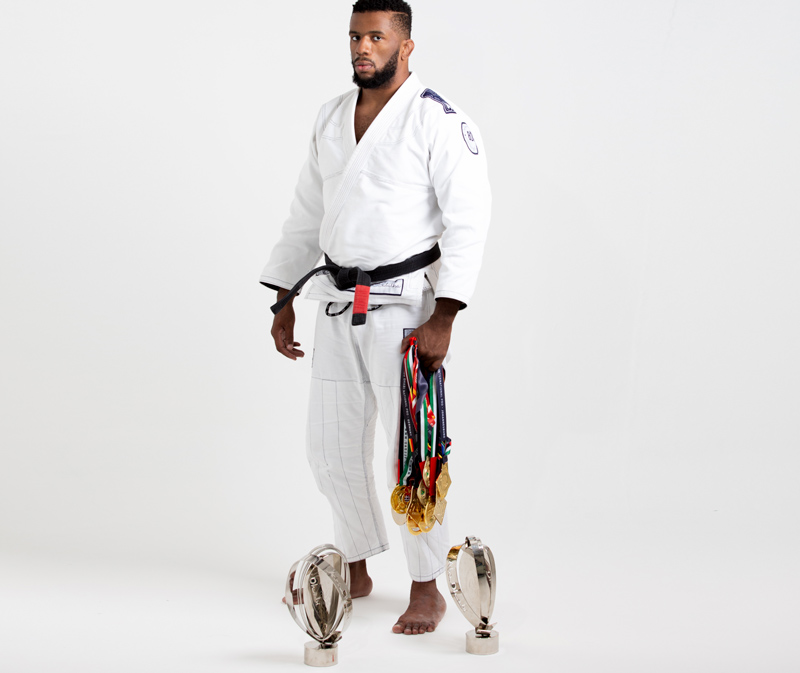
What equipment is needed for Brazilian Jiu-Jitsu?
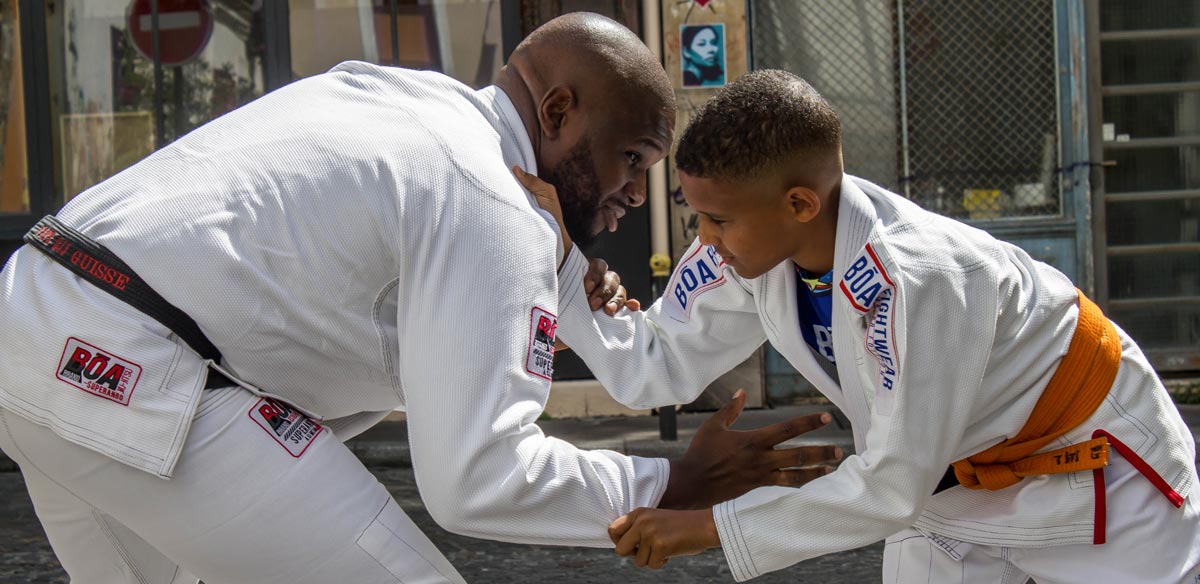
The best attire for practicing Brazilian Jiu-Jitsu is undoubtedly the kimono, also known as the "Gi". The choice of a good BJJ kimono is essential to ensure both comfort and performance during training and competition.
It must be resistant to withstand the constraints of practice, but also light enough to allow good mobility.
It is generally made of cotton and consists of a jacket, pants and a belt, which indicates the rank of the practitioner.
The color of Brazilian Jiu-Jitsu kimono may vary, but the most common are white, blue and black. It is important to note that some competitions have specific requirements regarding the color of the kimono.
Finally, respect for hygiene is essential: the kimono must be clean and neat for each training or competition, thus showing respect for oneself and for other practitioners.
Yes, there are many different types of kimonos for Brazilian Jiu-Jitsu. The choice of kimono is essential because it can influence your performance during training and in competition. BJJ kimonos are distinguished by their material, cut and size.
There are generally three types of fabric: the most basic "Simple" cotton ideal for test sessions, "Pearl Weave" cotton and "Gold Weave" cotton, the latter being the most resistant, they will be perfect for full season.
The cut can be traditional or more adjusted (being often preferred by competitors because it offers less grip to the opponent). As for the size, it must be adapted to the morphology of the practitioner to guarantee optimal comfort.
It is also important to note that some tournaments impose specific regulations on the type of kimono to be worn, so it is advisable to inquire before making a purchase.
What are the different grades of Brazilian Jiu-Jitsu?
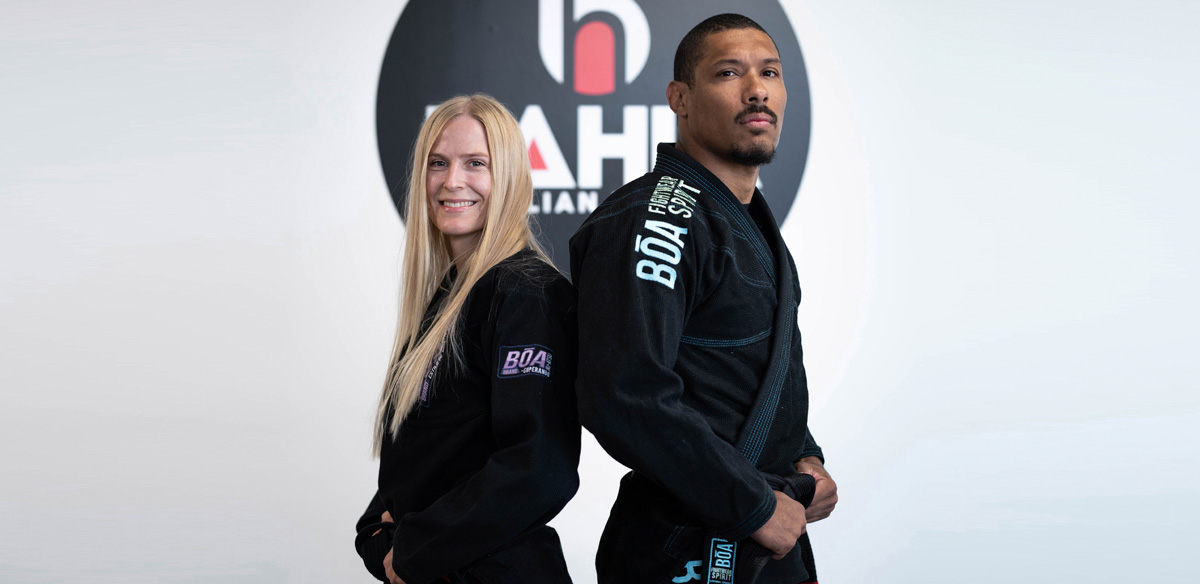
Obtaining ranks in Brazilian Jiu-Jitsu takes time, commitment and lots of practice. Unlike other martial arts where ranks can be achieved quite quickly, BJJ is known for its rigorous and demanding grading system.
Progressing from one grade to another is not only a question of time spent on the tatami, but also depends on the mastery of certain techniques, the attitude of the practitioner and his performance in competition.
Generally speaking, each practitioner progresses at their own pace, based on dedication, ability to learn, and commitment to training and competition. It is therefore important to understand that obtaining degrees in BJJ is a personal journey that requires time, patience and perseverance.
The graduation ceremony in Brazilian Jiu-Jitsu, essential to mark the progress of the practitioner, has no fixed dates and generally varies according to several factors.
These factors include the individual's skill level, knowledge of techniques, commitment to practice, as well as ability to apply skills in a combat or competitive setting.
However, it is common for clubs to hold graduation ceremonies once or twice a year, often at the end of the year and in the middle of the year. It is important to note that each club or coach may have their own criteria and schedule for awarding grades.
Ranks are represented by the color of the belt worn by the practitioner. These bjj belts symbolize the level of skill and accumulated experience. We usually start with a white belt, which represents the beginner level. With training and experience, one can progress to the blue, purple, brown and eventually black belt, which symbolizes technical mastery.
Each grade requires a certain level of skill and a set amount of practice time. Beyond the black belt, additional ranks, symbolized by bands on the belt, may be awarded in recognition of outstanding contributions to the art of Brazilian Jiu-Jitsu.
The Grail in the context of Brazilian Jiu-Jitsu can be interpreted as the ultimate achievement in this discipline. For many, it's about achieving the black belt, a symbol of technical mastery, dedication and perseverance. However, the Grail can also be a personal achievement, such as winning a particular competition, mastering a complex technique, or simply improving as a practitioner and as a person. It is important to note that Brazilian Jiu-Jitsu is a personal journey, where each practitioner has his own vision of the Grail.
Brazilian Jiu-Jitsu training
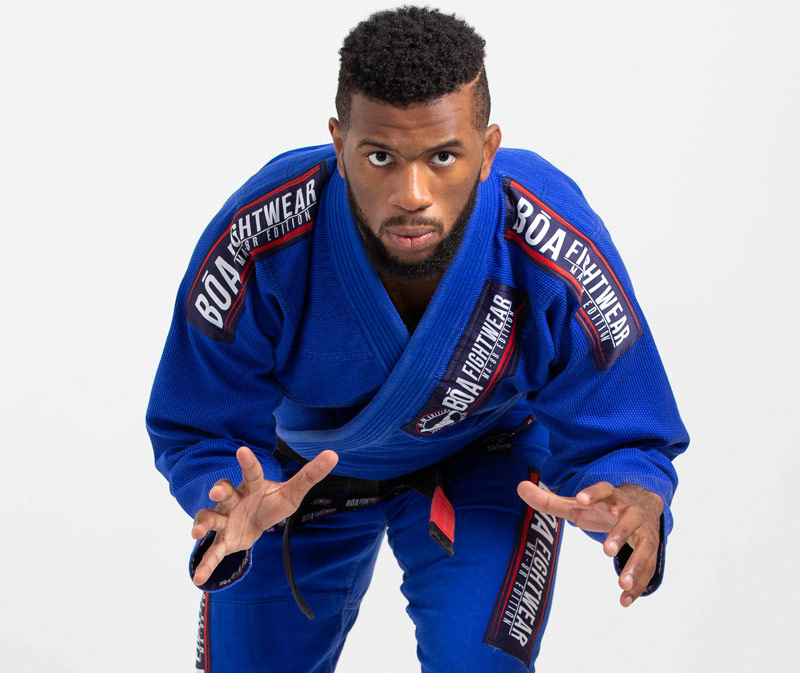
Do you have to warm up for BJJ?
crucial step before any Brazilian Jiu-Jitsu session is the warm-up, just like in any sport. In fact, skipping this step can significantly increase the risk of injury. A good warm-up prepares the body for physical activity by raising body temperature, improving blood flow to the muscles, increasing joint flexibility and mobility, and mentally preparing the individual for the effort ahead. Additionally, a proper warm-up can also improve performance, help prevent post-workout soreness, and increase overall endurance capacity.
It is important to warm up for about 10 to 15 minutes before you start doing Brazilian Jiu-Jitsu. If you're a beginner, it's best to start with a lighter warm-up and gradually increase it as you become familiar with the sport.
Here are some of the benefits of warming up before doing Brazilian Jiu-Jitsu:
-Prevent injuries
-Improve performance
-Increase flexibility
-Reduce body aches
-Improve coordination
-Increase self-confidence
If you're serious about Brazilian Jiu-Jitsu, it's important to warm up properly before every practice session.
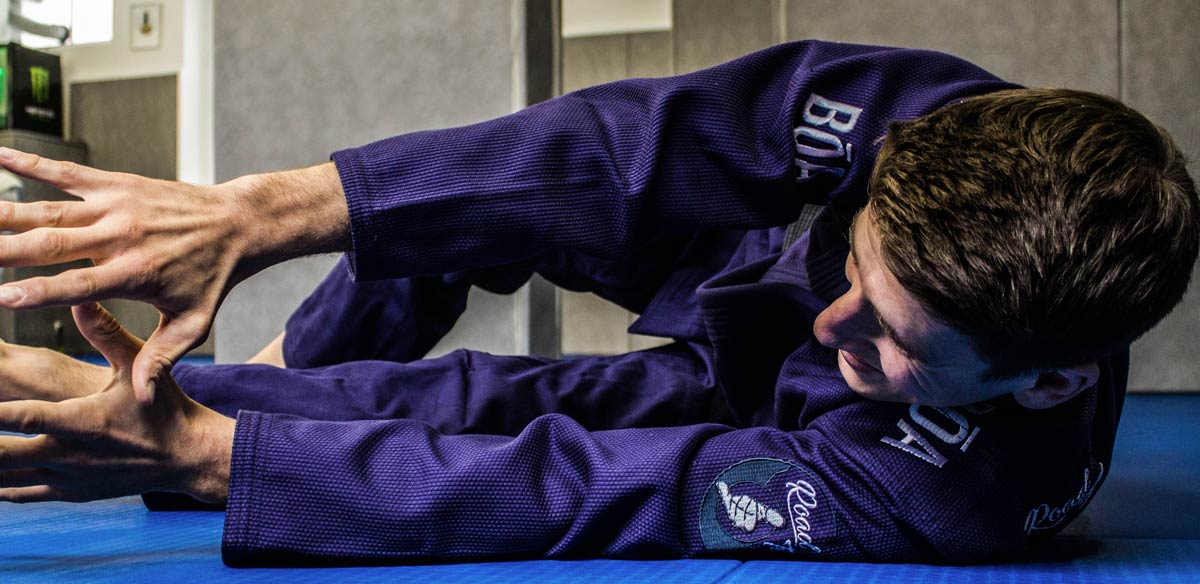
What is a Brazilian Jiu-Jitsu training session like?
The length of a Brazilian Jiu-Jitsu practice session can vary depending on many factors, including skill level, training goal, and the school or club where you train. However, in general, a typical workout lasts between 1 and 1.5 hours. This often includes a warm-up, a period of technical instruction, practical exercises and sometimes rolling or sparring in real conditions. It is important to note that the quality of the training is more important than the quantity, and each practitioner must adapt to their own pace and abilities.
Here are the phases:
Warming up : The warm-up is an important phase of any training session, as it prepares the body for the effort. It generally includes aerobic exercises, stretching exercises and movements specific to Brazilian Jiu-Jitsu.
Technical instruction : The technical instruction phase is an opportunity to learn or perfect the techniques of Brazilian Jiu-Jitsu. The coach demonstrates the techniques, then the students practice them in pairs.
Practical exercises : Practical exercises allow students to apply the techniques they have learned. They can consist of drills, sparring or mock combat.
Rolling : The Rollings are fights in real conditions. They allow students to test their techniques and develop their fighting instincts.
Debriefing : The debriefing phase is an opportunity to discuss the session and make corrections. The coach can also advise students on their technique or strategy.
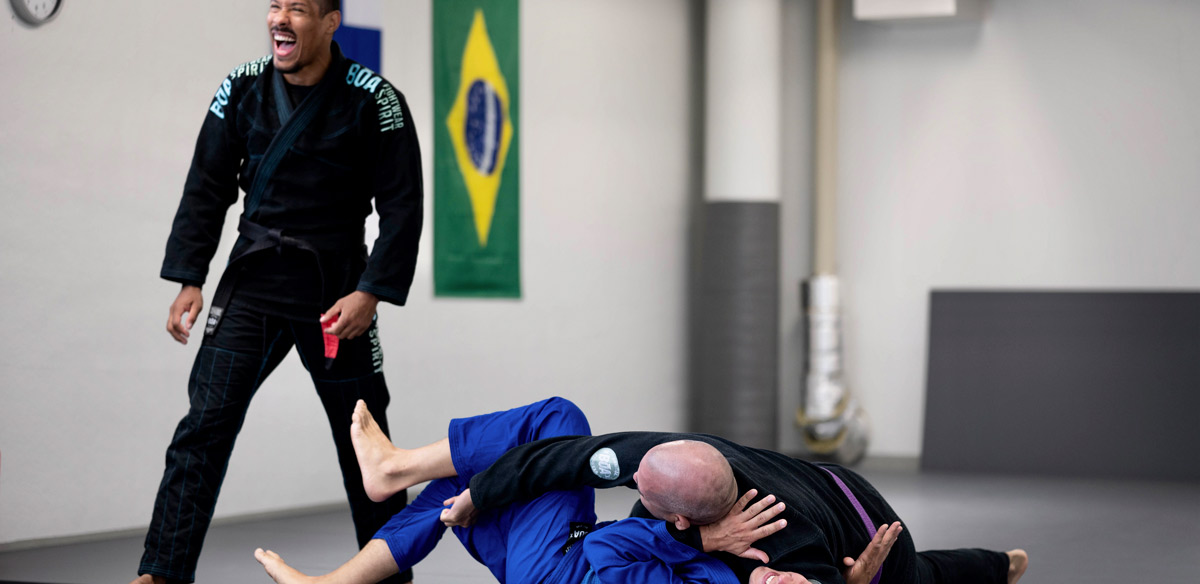
How to choose a good Brazilian Jiu-Jitsu coach?
To determine if a Brazilian Jiu-Jitsu trainer is serious and professional, several factors can be taken into account. First, assess their qualifications and experience: a qualified trainer will likely have undergone specific training and will have solid experience as a competitor.
Second, observe their behavior during practices: a good coach will be attentive, respectful and conscientious, and will never put the health or safety of their students at risk. Third, consider the structure and organization of his classes: well-planned sessions, with proper warm-up, clear instructions and debriefing, are indicative of a serious trainer. Finally, ask for references or testimonials from current or previous students to get an idea of the quality of his teaching.
In summary, the elements to take into account :
Qualifications and experience : The coach must have a good knowledge of Brazilian Jiu-Jitsu and teaching experience.
Teaching style : The coach's teaching style should suit you. Some coaches are more technique-oriented, while others are more sparring-oriented.
The ambiance of the room : The gym should be a safe and positive environment.
Your goals : Determine your goals in Brazilian Jiu-Jitsu before choosing a trainer. If you want to get into competition, you'll need a coach who can help you get to that level.
Becoming a Brazilian Jiu-Jitsu coach requires specific training. Various organizations offer certification programs for coaches, focusing on technical skill development, athlete safety, training planning, and sport psychology. These programs generally include theoretical courses, practical sessions and a final exam.
It is essential that future coaches acquire not only a thorough knowledge of Brazilian Jiu-Jitsu, but also leadership, communication and group management skills. In addition, it is recommended to have some experience as a competitor before becoming a coach, in order to have a better understanding of the sport and to be able to share this experience with the students.

What are the injuries in Brazilian Jiu-Jitsu?
Practicing Brazilian Jiu-Jitsu, like any other sport, involves certain risks of injury. Common injuries can include sprains, dislocations, broken bones, bruises and scrapes. BJJ-specific injuries include ear injuries, also known as "cauliflower" ears, caused by repeated rubbing or direct blows to the ear.
Knee and ankle sprains are also common, usually due to twisting movements or poorly controlled falls. Pulled muscles can also occur, especially when performing complex techniques without proper warm-up. It is essential to always follow safety rules, listen to your body and not exceed your limits to minimize the risk of injury. In case of injury, it is recommended to consult a medical professional for proper diagnosis and treatment.
It is important to note that Brazilian Jiu-Jitsu is an intense contact sport that carries inherent risks, like all combat sports. However, cases of death are extremely rare and are usually the result of a tragic accident, mismanagement of a serious injury, or a pre-existing medical condition.
Brazilian Jiu-Jitsu rules and regulations are designed to minimize the risk of serious injury. It is essential that each practitioner knows his limits and respects the safety instructions.
To avoid injuries while practicing Brazilian Jiu-Jitsu, several gestures and habits are essential. First, ensure an adequate warm-up before each workout and adopt correct technique.
A good trainer can correct movements to minimize the risk of injury. In addition, it is crucial to listen to your body and not exceed its limits. If a technique or movement causes pain, it is important to stop it immediately and consult a healthcare professional if necessary.
Brazilian Jiu-Jitsu and more
Can we practice No-Gi for BJJ?
Practicing No-Gi can certainly be beneficial. The NoGi refers to the practice of this sport without the traditional kimono, which changes the dynamics of the martial art. Without the Gi to grip and manipulate, athletes must focus on other aspects of their technique, such as body control and precision. It can help improve strength, speed and agility, as well as sense of position in space. Additionally, the No-Gi is often faster and more dynamic, which can improve cardiovascular fitness and endurance. No-Gi and Gi complement each other and practicing both helps to become a more complete Jiu-Jitsu athlete.
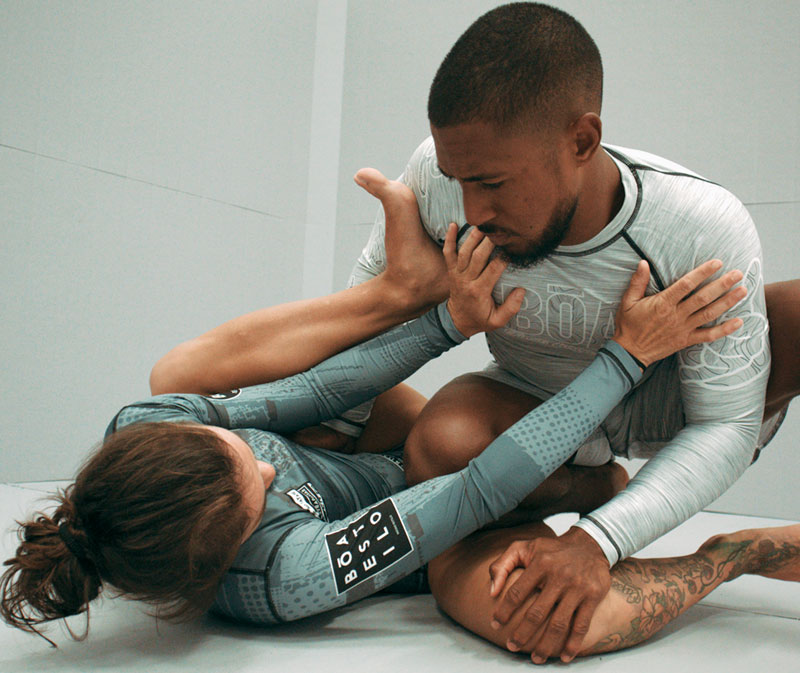
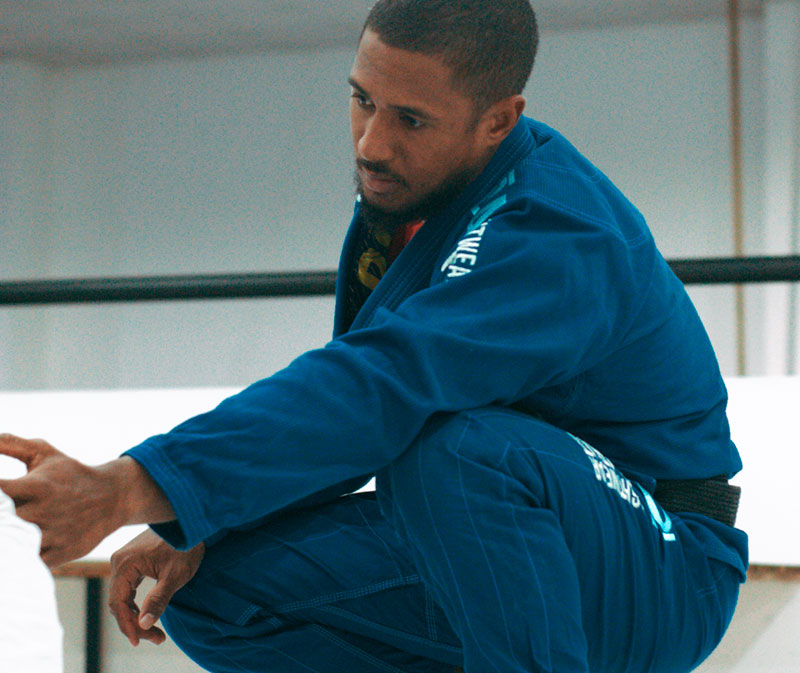
The best BJJ teachers
It is difficult to name a single country as the best for teaching Brazilian Jiu-Jitsu. However, Brazil, country of origin of this discipline, is often considered as a reference in the matter, thanks to its rich history and its tradition in the art of Jiu-Jitsu. Many great BJJ masters come from Brazil and have helped spread this discipline around the world. However, many other countries, including the United States, Europe and Asia, have also developed quality teaching programs, thanks to dedicated and passionate coaches. It is therefore recommended to look for a school or an instructor who is not only competent, but also able to create a positive and respectful learning environment.
BJJ hygiene
Maintaining impeccable hygiene is essential when practicing Brazilian Jiu-Jitsu, or any other martial art. Not only does this respect your training partners, but it also helps prevent the spread of skin infections common in contact sports. Before each session, make sure your kimono is clean and dry, your nails are short and clean, and take a shower if possible. After training, it is recommended to shower immediately and wash the kimono thoroughly. It is also advisable to regularly clean training equipment, such as mats, tatamis and pads. In short, good hygiene is a mark of respect for oneself, one's partners and the sport itself.
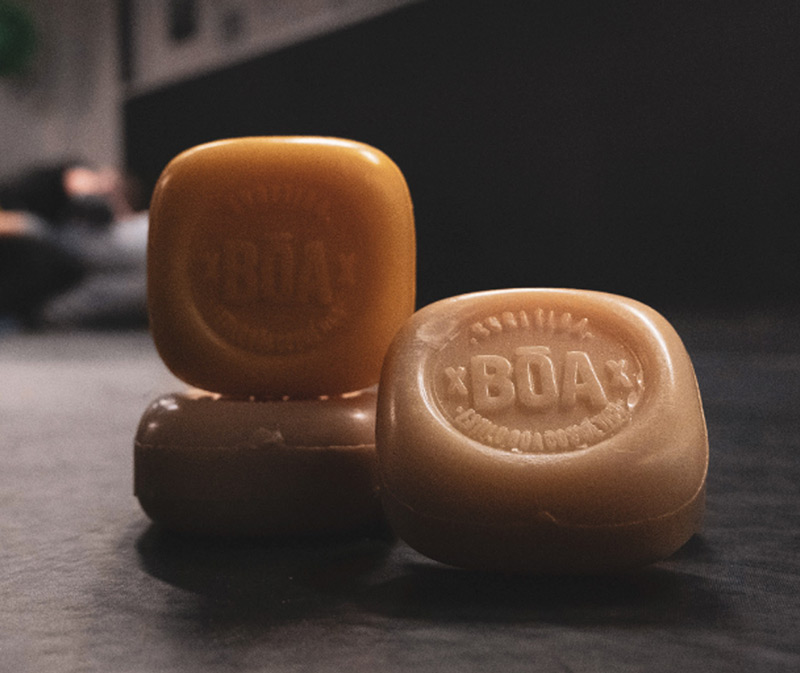
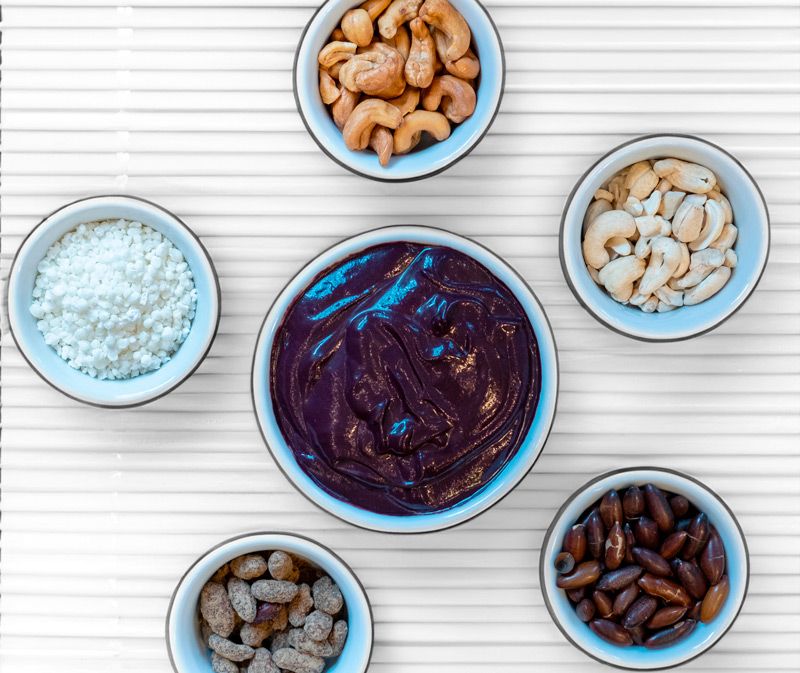
Diet
specific diet can be beneficial for Brazilian Jiu-Jitsu practitioners, although this may vary depending on individual needs and goals. In general, a balanced diet high in protein for muscle repair, complex carbohydrates for energy, and fruits and vegetables for vitamins and minerals is recommended. It is also important to stay well hydrated before, during and after training to compensate for water loss through sweating. Some athletes may choose to follow specific diets to improve performance, speed up recovery, or maintain a certain weight for competitions. It is always advisable to consult a nutrition professional before making any major changes to your diet.
Here are some tips for a healthy diet for Brazilian Jiu-Jitsu practitioners:
-Eat lots of fruits and vegetables.
-Eat lean proteins, such as chicken, fish or beans.
-Eat complex carbohydrates, such as whole grains, sweet potatoes, and fruit.
-Drink a lot of water.
It's also important to listen to your body and get enough rest after workouts. Brazilian Jiu-Jitsu is a physically demanding sport, so it's important to give yourself time to recover.
What are the benefits of Brazilian Jiu-Jitsu?
Brazilian Jiu-Jitsu is a sport that offers many benefits, both physical and mental, we can mention:
The physical condition : Brazilian Jiu-Jitsu is a complete sport that works all the muscles of the body.
The coordination : Brazilian Jiu-Jitsu develops coordination and agility.
Flexibility : Brazilian Jiu-Jitsu improves flexibility.
Strength : Brazilian Jiu-Jitsu develops muscle strength.
Self-confidence : Brazilian Jiu-Jitsu helps develop self-confidence.
Concentration : Brazilian Jiu-Jitsu helps develop concentration.
Discipline : Brazilian Jiu-Jitsu helps develop discipline.
The respect : Brazilian Jiu-Jitsu helps develop self-respect and respect for others.

Brazilian Jiu-Jitsu is a sport that offers many benefits, both physical and mental. If you are looking for a complete and challenging sport, Brazilian Jiu-Jitsu is an excellent option.
